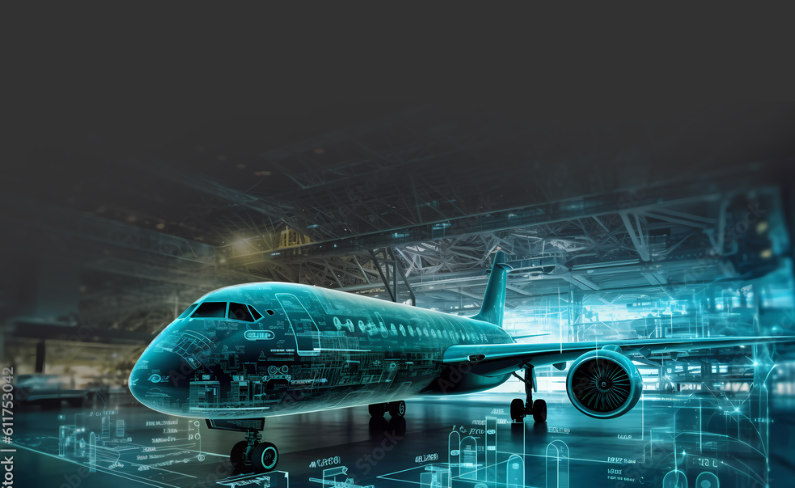Aerospace & Defense Digital Twin Solutions
A Digital Twin is a virtual version of a system, such as an aircraft or an aircraft manufacturing line that is used as a tool for the improved development or operation of that system. A well-designed and implemented Digital Twin solution will provide a significant return on investment in terms of shorter and less costly product development cycles or reduced operating costs.
Digital Twin
The Digital Twin solutions ADI’s customers invest in can be divided into two categories:
- Digital Twin solutions used as part of a digital engineering, product development enterprise
- Digital Twin solutions used to monitor industrial assets, such as a manufacturing line, to reduce the cost and increase the efficiency of that asset
Digital Twin for Aircraft Development
The world of modern aircraft development has become largely dependent on the use of a Digital Twin test enterprise capability that acts as a critical tool for the integration, evaluation, and certification of a commercial or military aircraft.
The most comprehensive and successful aircraft Digital Twin platforms start as a virtual aircraft that can be run on an engineer’s laptop or as high-volume batch testing on servers or in the cloud. Key functions of the aircraft are assessed in simulation then later aircraft subsystem supplier simulations and software-in-the-loop models are integrated for virtual aircraft integration and verification testing. As aircraft subsystems are made available by suppliers for integration and evaluation, real equipment gets connected with the Digital Twin aircraft for hardware-in-the-loop testing.
In addition to its role in virtual testing, the Digital Twin aircraft is also a critical component of the testing performed in a range of ground-based simulated flight test labs, including:
- Cockpit Lab – developing flight control laws and pilot assessment of the flight deck and controls
- Iron Bird Lab – developing and verifying the flight control system
- Avionics Integration Lab – integrating and verifying all avionics systems and aircraft data networks
The virtual aircraft Digital Twin must support high-fidelity, pilot/crew in-the-loop testing to allow for hands-on assessment of the aircraft design and performance. Equally important, the virtual aircraft Digital Twin must also support fully-automated regression testing whereby dozens and even hundreds of virtual flight tests are performed overnight, or over several days, comprehensively testing the aircraft systems in a manner similar to how large, complex software products are tested. Pilot-in-the-loop testing and evaluation is critically important throughout the development program. Fully automated testing is critically important for the cost-effective long-term support of the fleet, testing software updates and revenue-generating product upgrades.
Benefits for Aircraft Development
Aircraft development has become dependent on a well-implemented digital engineering strategy that includes an aircraft Digital Twin test platform due to the tremendous impacts this methodology has on reducing development schedules, as well as reducing the cost of aircraft testing activities. In the absence of an aircraft Digital Twin platform, aircraft integration testing must be performed using real flight test aircraft. The aircraft Digital Twin offers a multifaceted set of tools for testing the aircraft in a lower-cost environment that supports a broader scope of testing, including the testing activities that cannot be performed in flight test due to safety risks.
See how ADI’s Open Process Automation solutions can work for you.
Let’s ChatDigital Twin for Connected Manufacturing
The Digital Twin for Connected Manufacturing operates in real-time alongside a discrete or process manufacturing line as an edge computing system to enhance the manufacturing line capabilities. This on-premises industrial computing solution collects data from the distributed control system or PLC systems, often collecting data from supplementary sensors, such as vibration or video. This data is then input into machine learning algorithms purpose-designed to predict the manufacturing line equipment and process health.
A well-implemented Digital Twin for manufacturing intelligence can significantly reduce downtime, waste, and power consumption, while significantly improving product yield and quality for your manufacturing operations.

